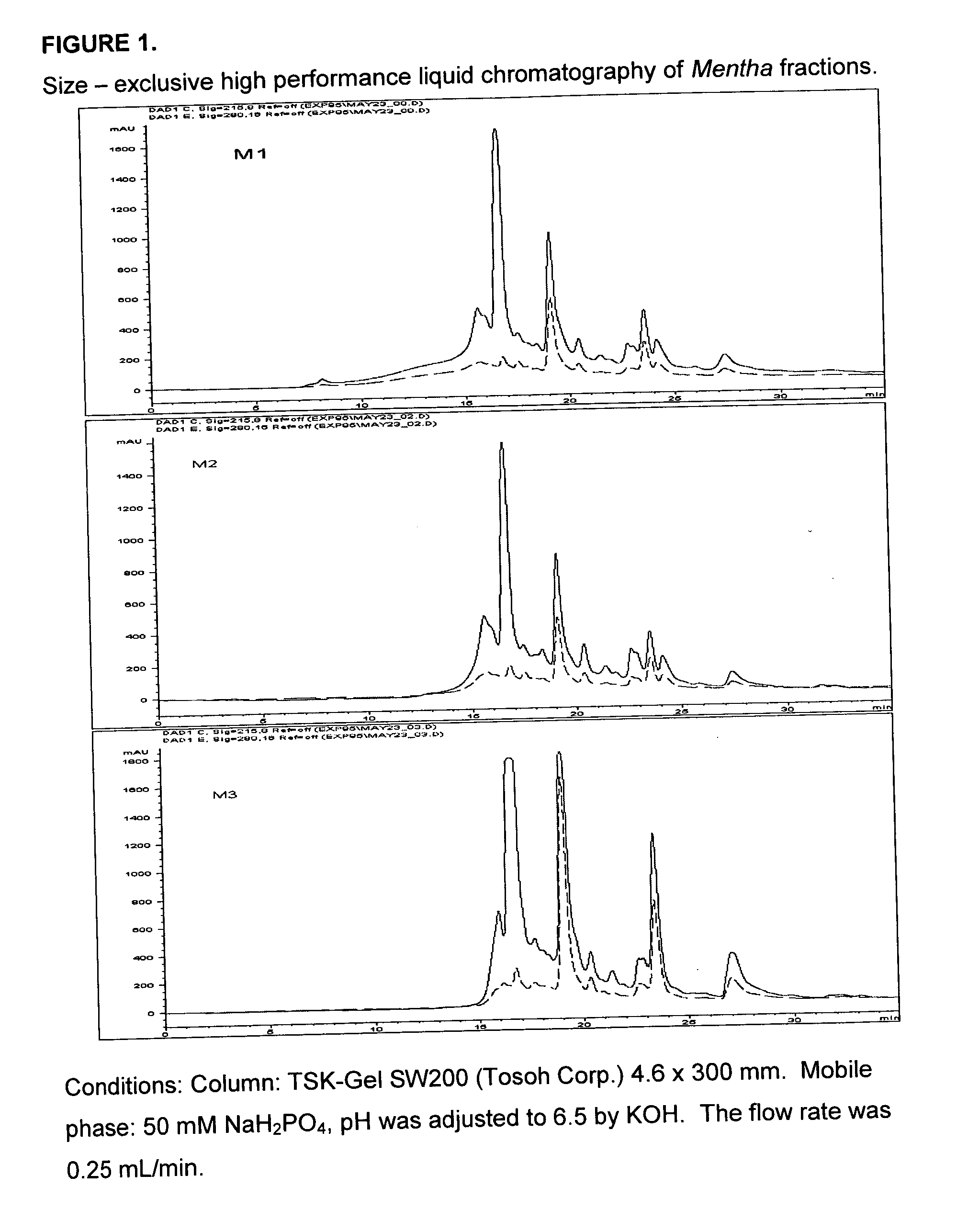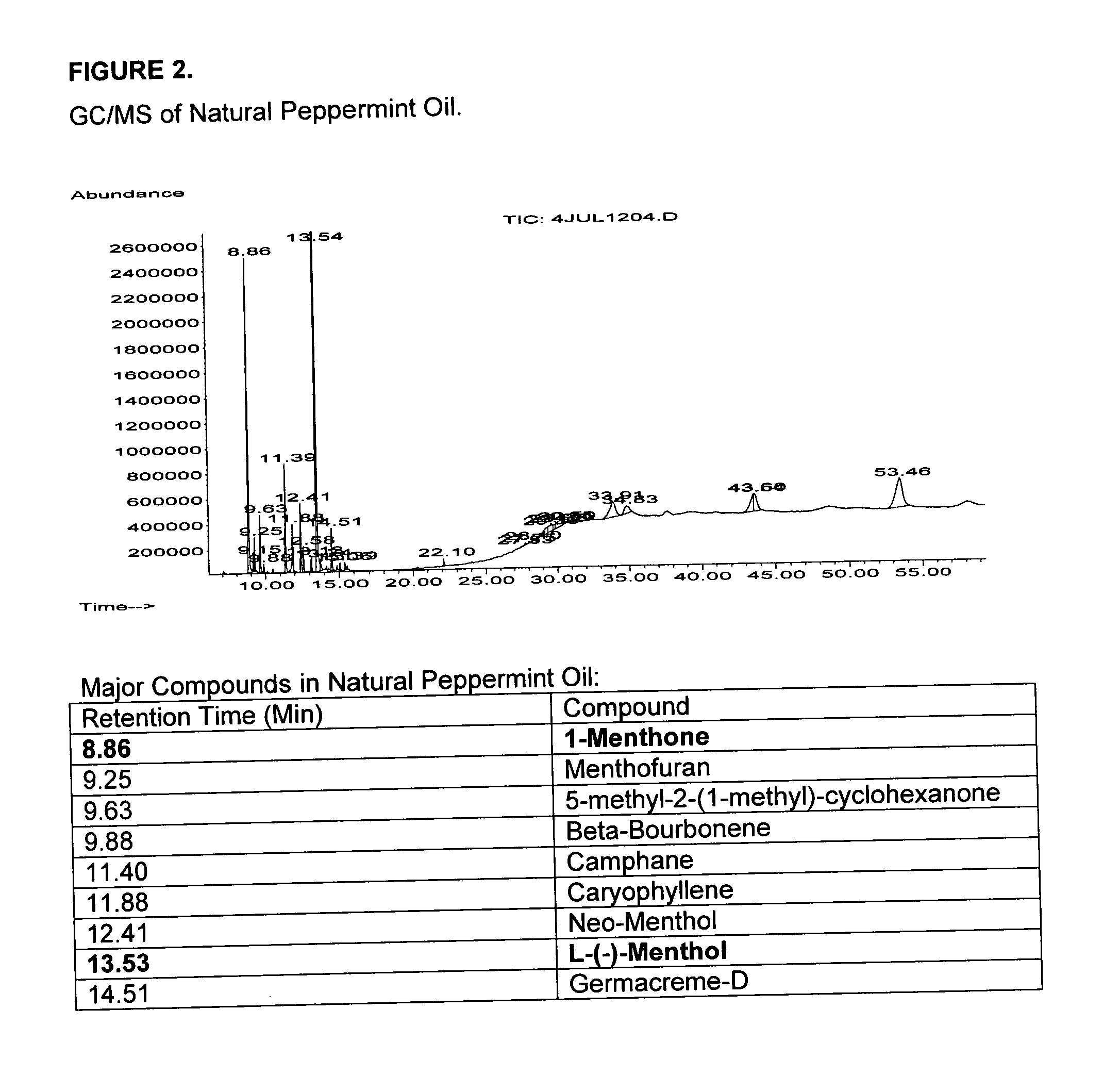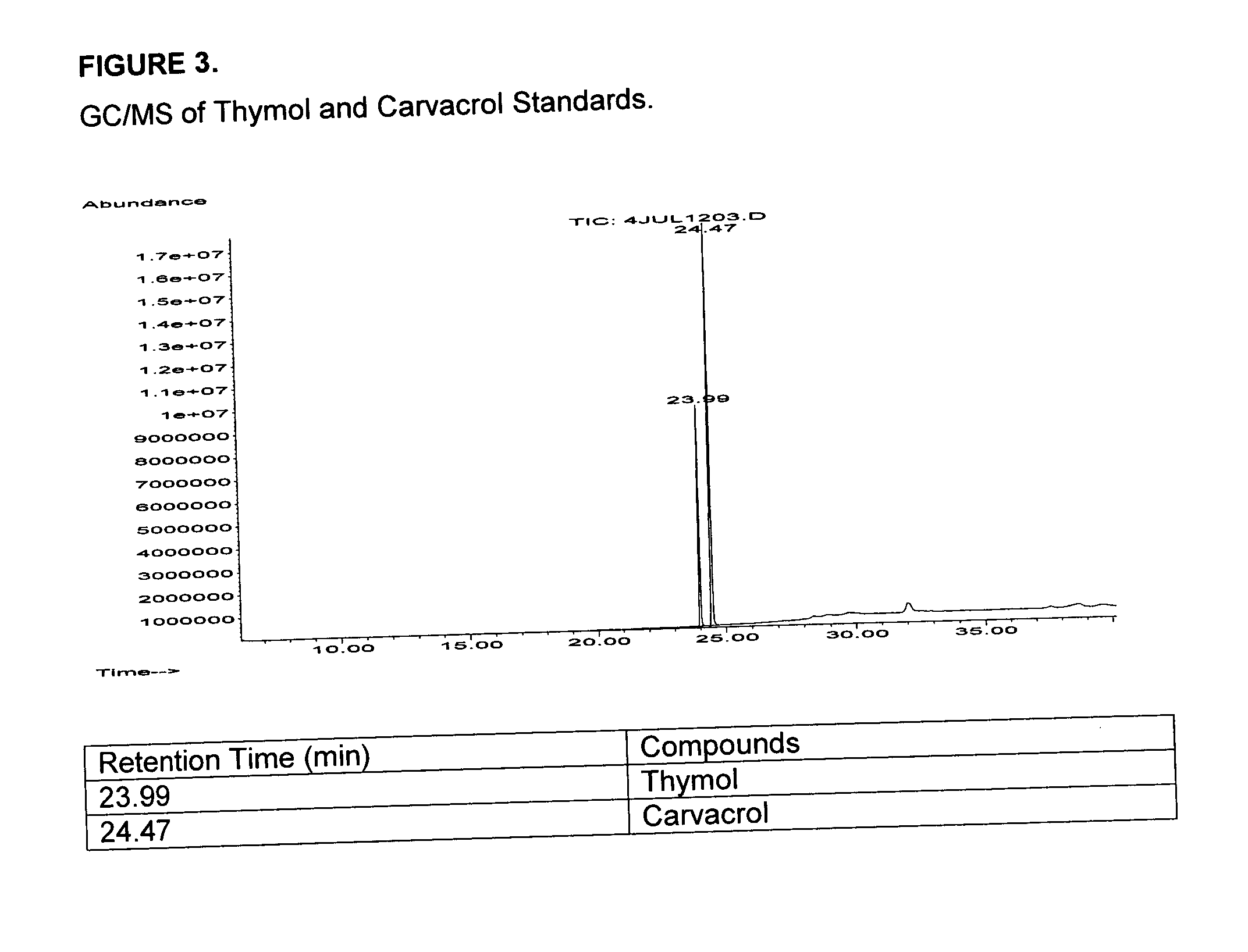Oral care compositions derived from the Labiatae family
a labiatae and composition technology, applied in the field of labiatae family oral care compositions, can solve the problems of tooth sensitivity, harmful side effects, tooth decay, etc., and achieve the effect of reducing inflammation in the oral cavity and strong anti-oxidative capacity
- Summary
- Abstract
- Description
- Claims
- Application Information
AI Technical Summary
Benefits of technology
Problems solved by technology
Method used
Image
Examples
example 1
Extraction and Fractionation of Plants of Mentha Genus Using Previously Extracted Plant Material.
[0095] Processed peppermint leaves (600 g) were ground and extracted with boiling water (6.6 L) for 1 hour. After cooling, the extract was filtered. The pH, which ranged from approximately pH 4 to near neutrality, was not chemically altered from the native value during the extraction process. The water was evaporated from the filtered solution to obtain a black, semi-crystal material (150 g; yield 25%) and is referred to as the “M” fraction. This total extract was dissolved in water (600 mL), followed by the addition of 600 mL of a water-miscible organic solvent, such as MeOH, EtOH, acetone, and / or their combination. After addition of the organic solvent, the mixture was allowed to stand at room temperature for 2 hours to allow the formation of a precipitate. This material which was insoluble in 50% organic solvent, was filtered to yield a dark brown paste-like material (dry weight 37....
example 2
Extraction of Plants of Mentha Genus Using Previously Extracted Plant Material.
[0097] Processed peppermint leaves (260 g) were extracted with boiling methanol (2.5 L) for 4 hours and the mixture was left at room temperature for another 20 hours. After 24 hours of total extraction time, the mixture was filtered to yield 1.5 L of dark green methanolic solution. Evaporation afforded 28 g of black-greenish semisolid material (1.1% yield).
example 3
GC / MS Analysis (for Mint Oil Related Compounds as Well as Thymol and Carvacrol) of Spent Mint Water Extracts and Spent Mint Methanol Extracts.
[0098] Analysis of the extracts obtained in Examples 1 and 2 was performed using GC (model 6890) hosted HP-Innowax capillary column (30 m×0.25 μM) interfaced with an MS detector (5973) (all from Agilent). The initial temperature was 30° C. (6 min), followed by ramping 6° C. / min to a final temperature of 220° C. (hold for 30 min). The eluted peaks were identified by their mass spectra using reference standards. FIGS. 2-5 show that there were no mint oil related compounds, thymol, or carvacrol detected in the extracts obtained in Examples 1 and 2.
PUM
| Property | Measurement | Unit |
|---|---|---|
| Temperature | aaaaa | aaaaa |
| Temperature | aaaaa | aaaaa |
| Temperature | aaaaa | aaaaa |
Abstract
Description
Claims
Application Information
 Login to View More
Login to View More - R&D
- Intellectual Property
- Life Sciences
- Materials
- Tech Scout
- Unparalleled Data Quality
- Higher Quality Content
- 60% Fewer Hallucinations
Browse by: Latest US Patents, China's latest patents, Technical Efficacy Thesaurus, Application Domain, Technology Topic, Popular Technical Reports.
© 2025 PatSnap. All rights reserved.Legal|Privacy policy|Modern Slavery Act Transparency Statement|Sitemap|About US| Contact US: help@patsnap.com



